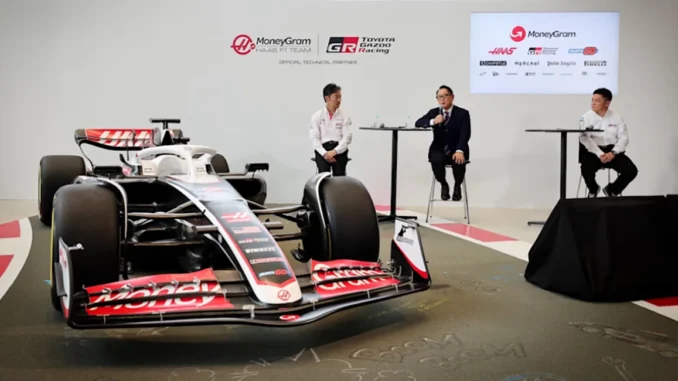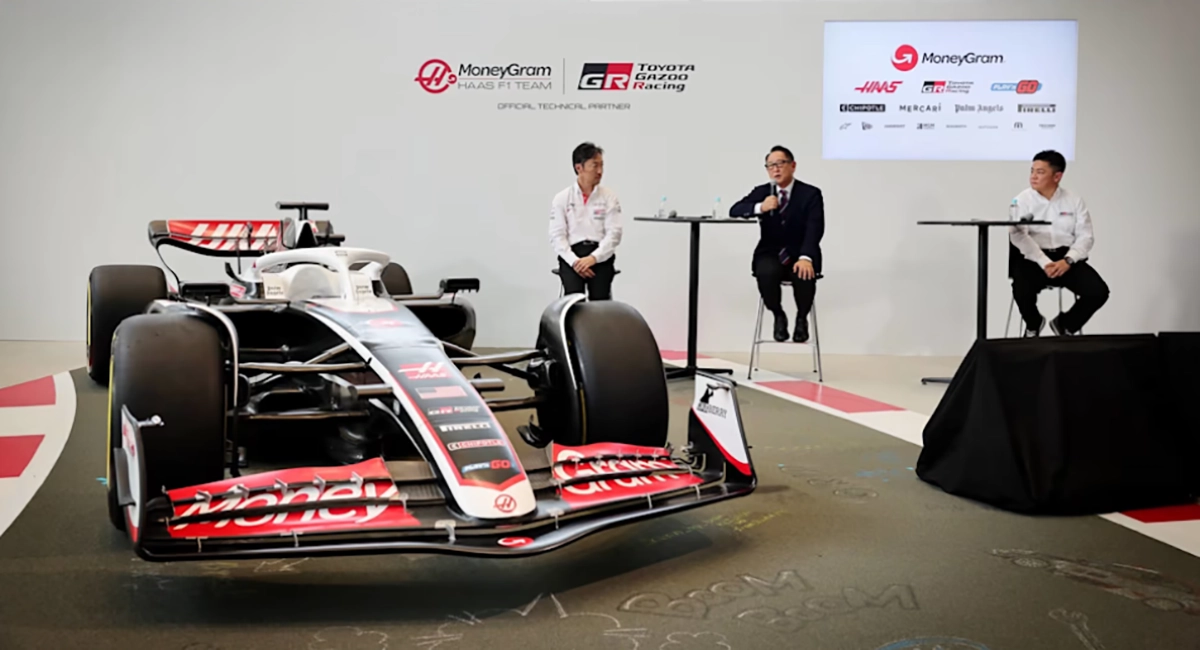
After a 15-year absence from Formula 1, Toyota is making a highly anticipated return to the sport, not as a full-fledged works team, but through a multi-year technical partnership with the American-based Haas F1 Team. Announced on October 11, 2024, at the Toyota-owned Fuji International Speedway, this collaboration marks a significant moment for both parties, blending Toyota’s motorsport expertise with Haas’s ambitions to solidify their standing in the midfield. F1 Correspondent Lawrence Barretto’s analysis sheds light on the motivations, mechanics, and mutual benefits of this deal, revealing a partnership poised to reshape both organizations.
Why Toyota’s Return Matters
Toyota’s history in Formula 1 spans eight seasons from 2002 to 2009, during which the Japanese manufacturer competed as a works team and engine supplier. Despite achieving 13 podiums and a best constructors’ finish of fourth, Toyota exited the sport amid the global financial crisis and a lack of on-track victories. Since then, the F1 landscape has evolved dramatically, with the sport’s global popularity surging and rival Honda reclaiming championship glory. For Toyota, sitting on the sidelines while competitors thrived likely fueled a desire to re-engage with the pinnacle of motorsport.
However, this return is not a full-scale comeback. Instead, Toyota Gazoo Racing (TGR), the company’s motorsport division, is stepping in as a technical partner to Haas. This approach allows Toyota to dip its toes back into F1 waters without the immense financial and operational commitment of running its own team. For Haas, the smallest outfit on the grid with roughly 320 staff, this partnership offers a lifeline to bolster their resources and competitiveness in a cost-effective way.
Haas’s Motivation: Punching Above Their Weight
Haas has carved out a reputation as Formula 1’s underdog since joining the grid in 2016. Despite their modest size, the team has shown flashes of brilliance, sitting seventh in the 2024 constructors’ championship with a realistic chance of overtaking RB for sixth as of late last year. This would mark their second-best finish in nine years, a testament to their ability to maximize limited resources. However, Team Principal Ayao Komatsu has been candid about the team’s shortcomings, admitting on a video call from Japan that Haas lacks “certain resources and hardware capabilities to understand certain things.”
To maintain their midfield competitiveness consistently, Haas needed a partner with both the infrastructure and expertise to fill these gaps. Enter Toyota Gazoo Racing. With an impressive facility in Cologne, Germany—home to Toyota’s World Endurance Championship team and previously a hub for McLaren’s wind tunnel program—TGR brings a wealth of technical know-how and manufacturing prowess. For Haas, this partnership complements their existing relationships with Ferrari, who supply power units and other components, and Dallara, their long-time chassis partner.
How the Partnership Works
The collaboration between Haas and TGR is a symbiotic exchange of strengths. TGR will provide design, technical, and manufacturing services, leveraging their Cologne facility to enhance Haas’s development capabilities. This includes plans to build a simulator—a critical tool Haas has lacked—allowing the team to accelerate their understanding of car performance without the prohibitive cost of developing such hardware in-house. While getting the simulator fully operational by 2025 may be ambitious, the partnership promises a faster and more efficient solution than Haas could achieve alone.
In return, Haas offers TGR access to their F1 expertise and a platform to refine Toyota’s engineering skills. Komatsu emphasized the synergy:
“They are looking for the latest F1 know-how and skillset, which we have, but we don’t have their facilities, the number of people and their resource.”
This mutual benefit extends to a Testing Previous Car (TPC) program, a first for Haas, which will see them run two-year-old machinery in private tests. This initiative not only provides valuable track time for Haas to evaluate young drivers and train staff but also allows Toyota to embed their engineers and mechanics, gaining hands-on F1 experience.
The partnership kicks off immediately, with TGR branding set to appear on Haas’s cars at the United States Grand Prix in Austin on October 18-20, 2024. Commercially, the deal is significant, reportedly worth tens of millions of dollars annually, but its scope extends far beyond sponsorship. Both parties view this as a long-term project with room to grow, potentially reshaping Haas’s technical operations over time.
What’s in It for Toyota?
For Toyota, the partnership aligns with broader company goals, particularly the development of young Japanese talent. Embedding TGR personnel in Haas’s simulator and TPC programs offers a pipeline for engineers, mechanics, and drivers to gain F1 experience. This is especially crucial for Toyota’s driver development ambitions, as it provides a pathway for prospects to test F1 machinery—something previously out of reach since their 2009 exit. Chairman Akio Toyoda has expressed a desire to inspire Japanese youth, hinting at a personal regret over withdrawing from F1 and blocking their path to the sport’s elite level.
While Toyota isn’t supplying engines—Haas remains tied to Ferrari through 2028—the partnership keeps the door ajar for deeper involvement. Speculation about Toyota eventually replacing Dallara as Haas’s chassis supplier or even developing their own power unit post-2028 persists, though no concrete plans have been confirmed. For now, TGR’s focus is on leveraging Haas to enhance their motorsport capabilities, with potential trickle-down benefits for their production vehicles.
Transparency and Trust
A key aspect of this deal is its compatibility with Haas’s existing Ferrari partnership. Komatsu has been transparent with Ferrari management from the outset, ensuring clear boundaries to protect intellectual property (IP) for all parties. “What we have with Ferrari is amazing. It’s the foundation of Haas F1 Team,” he said. “But there are areas Toyota can help us outside of that.” Ferrari’s support, alongside TGR’s resources, positions Haas to evolve without disrupting their core operational model.
Looking Ahead
The Toyota-Haas partnership is a pragmatic yet ambitious step for both sides. For Haas, it’s a chance to bridge resource gaps, enhance their car development, and sustain their midfield resurgence. For Toyota, it’s a low-risk re-entry into F1, offering technical growth and a platform to nurture talent. As Komatsu put it, the collaboration has “obvious benefits on both sides,” a sentiment echoed by Toyota chiefs Akio Toyoda and Tomoya Takahashi during the Fuji announcement.
As the 2024 season progresses and the partnership takes root, all eyes will be on Austin to see the first fruits of this alliance. With Toyota’s branding adorning the VF-24 and a shared vision for the future, this deal could mark the beginning of a transformative chapter for Haas—and a calculated step back into the F1 spotlight for Toyota Gazoo Racing.






Be the first to comment